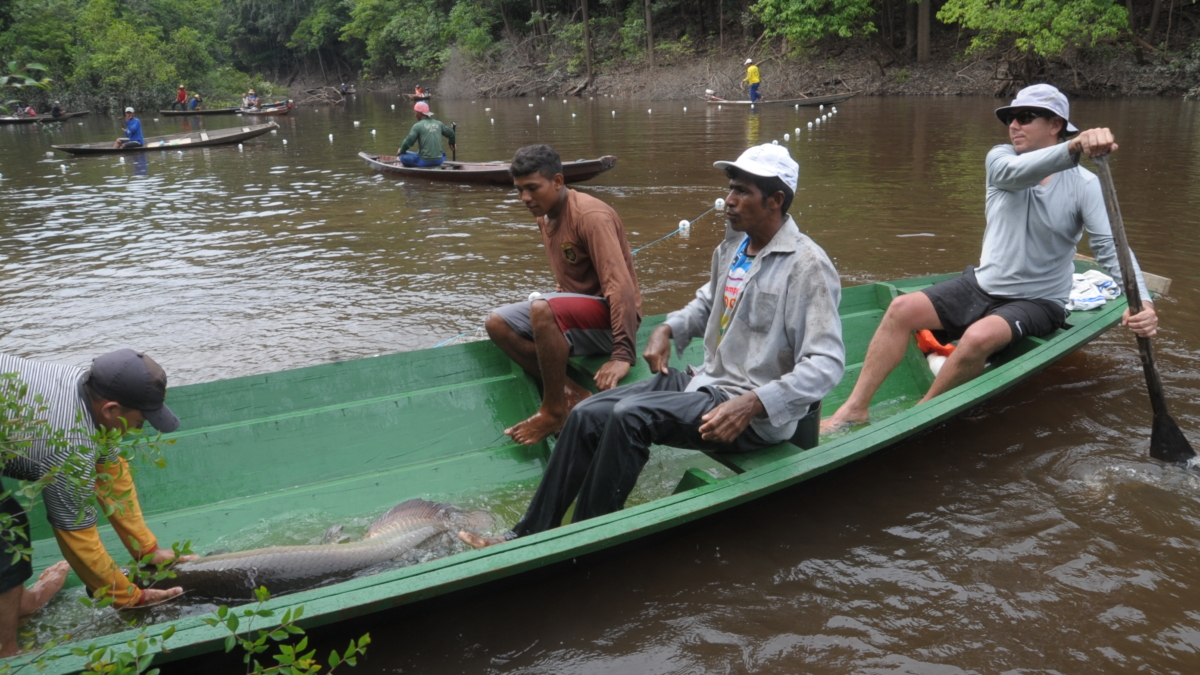A new arapaima migration and habitat study is now underway in the Piagaçu-Purus Sustainable Development Reserve in Amazonas, Brazil. A team of researchers from the Virginia Polytechnic Institute and State University (Blacksburg, Virginia), Carleton University (Ontario, Canada) and Instituto Piagaçu (Manaus, Brazil) collaborated in the first-ever tagging effort in the reserve in early November. The overall goal of the project is to understand the movement of arapaima and details of their preferred habitat to improve fisheries management and conservation.

“Understanding seasonal migration patterns of arapaima will allow fishers and managers in the region to better assess their populations as they set harvest quotas,” remarks Dr. Leandro Castello, Assistant Professor in Virginia Tech’s Department of Fish and Wildlife Conservation.
The team waited until the dry season to tag the fish, allowing them to more easily capture fish when water levels were at their lowest of the year. This is also the same time that the local fishermen harvest their calculated quota of fish from the areas inside the reserve.

Researchers partnered with more than a dozen local fishermen to capture and surgically implant radio and acoustic transmitters (tags) in 49 arapaima over the course of one week. The acoustic tags wirelessly communicate with receivers placed underwater to collect data. Similarly, the radio tags transmit frequencies that are detected using a handheld VHF receiver. The information provided by tags and receivers allows scientists to detect the location of the fish and study where they move. This is the first study of arapaima movement to combine acoustic and radio telemetry technologies.
“We have an amazing team of dedicated researchers and great support from the local communities, which makes this a really exciting project to be a part of.” says Gretchen Stokes, a Master’s Student in Virginia Tech’s Department of Fish and Wildlife Conservation. “I know that what we find will better inform local conservation decisions for this iconic species.”

Stokes will join biologist Thiago Petersen and their local field assistant next year to track arapaima movement using radio telemetry. The study extends through November 2015.
This project was made possible thanks to the generous support of the Instituto Piagaçu and the invaluable assistance of the fishermen who provided local knowledge and expertise while working tirelessly throughout the expedition.
To read more:


